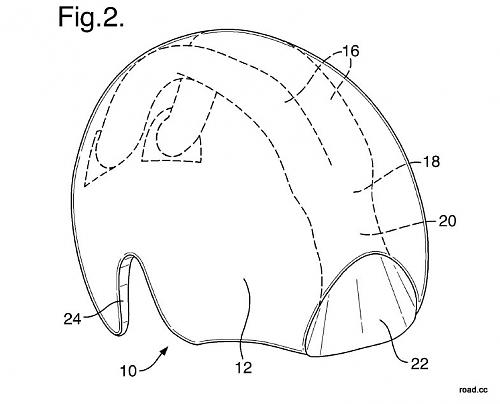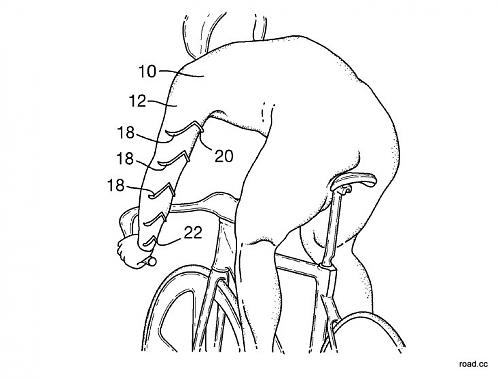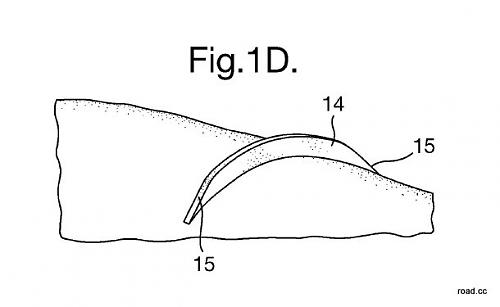- News
- Reviews
- Bikes
- Accessories
- Accessories - misc
- Computer mounts
- Bags
- Bar ends
- Bike bags & cases
- Bottle cages
- Bottles
- Cameras
- Car racks
- Child seats
- Computers
- Glasses
- GPS units
- Helmets
- Lights - front
- Lights - rear
- Lights - sets
- Locks
- Mirrors
- Mudguards
- Racks
- Pumps & CO2 inflators
- Puncture kits
- Reflectives
- Smart watches
- Stands and racks
- Trailers
- Clothing
- Components
- Bar tape & grips
- Bottom brackets
- Brake & gear cables
- Brake & STI levers
- Brake pads & spares
- Brakes
- Cassettes & freewheels
- Chains
- Chainsets & chainrings
- Derailleurs - front
- Derailleurs - rear
- Forks
- Gear levers & shifters
- Groupsets
- Handlebars & extensions
- Headsets
- Hubs
- Inner tubes
- Pedals
- Quick releases & skewers
- Saddles
- Seatposts
- Stems
- Wheels
- Tyres
- Health, fitness and nutrition
- Tools and workshop
- Miscellaneous
- Tubeless valves
- Buyers Guides
- Features
- Forum
- Recommends
- Podcast
TECH NEWS
British Cycling’s ‘Secret Squirrel Club’ developing new aero helmet and drag reducing clothing
Two recently filed patents for drag reducing clothing and an aero ducted helmet by UK Sport give us a glimpse at the latest technologies being pioneered for the British Cycling squad.
British Cycling and UK Cycle Sport are well known for pushing the boundaries of bicycle design and clothing, with its ‘Secret Squirrel Club’ instrumental in giving the athletes cutting-edge equipment such as the bespoke carbon fibre frames, aero handlebars and helmets and skinsuits that have played no small part in the haul of gold medals the Beijing and London Olympics.

The helmet is a serious step forward from the helmets worn by the British Cycling athletes at London 2012. The design uses a pair of front inlets that channel air through internal ducts, and combine into a single rear outlet. This is intended to avoid the laminar flow from separating from the surface, because when that happens drag is increased. It’s similar technology to that being utilised by Boeing in the development of tiny holes in the tail of its new 777X aircraft to smooth airflow with the aim of improving fuel efficiency.
Along with the potential for improved aerodynamics, this helmet design leaves the athletes ears uncovered. The helmet is listed as being invented jointly by Mark Teaucher, Director at Bristol-based Crux Product Design, Alex Bertram and James Anthony.
The conventional approach to aero helmets, both for time trials and road helmets, is to streamline the helmet to smooth the airflow around the helmet. The rear outlet seems counterintuitive, but the patent makes it clear that this helmet is still in development and the mechanism by which drag is reduced isn’t yet fully understood. It does say that when a rider's torso is at a 30 degree angle relative to the ground, the “flow of air from the rear of the helmet significant improves the airflow patterns down the back of the rider, thus reducing drag.”
How far could this duct technology be taken? The last sentence in the patent sets out the possible direction the helmet could be taken, and is sure to have the UCI raising their eyebrows. “Optionally, an impeller may be included in duct 20 to assist the air flow through ducts 16 and 20. The impeller may be driven from an electric motor powered by a battery incorporated beneath the hard shell.”

The second weapon in the British Cycling team's arsenal is drag reducing clothing. British Cycling was famously said to have burned the skinsuits it had developed after Beijing, and they caused more controversy recently with skinsuits worn in time trials on the road at the Tour de France by Bradley Wiggins last year, which looked to have aero arm wires to manage airflow.
The inventor of the drag reducing clothing, Robert William Lewis, has developed ‘kicks’, 3mm raised chevrons made from moulded plastic placed 50mm apart on the rear of the arms and legs, pointing upwards.

The patent claims that air flows up the arm and legs, which contributes to a large percentage of the overall drag (with the body about 80% of the drag you face as a cyclist) and by disrupting this airflow with raised dams the aerodynamic performance is improved.
According to the patent, “Overall best results were obtained with nine reversed chevron kicks having an angle of 90[deg.] between the arms of the chevron”. In their testing, they found that, “As air speed increases the drag saving on the arms with this invention also increases with ten chevrons each 3mm high from 1.33 Newtons total at 14m/s to a total of 2.94 Newtons at 20m/s. However, the greatest overall drag reduction occurred at 17m/s, with the total body drag saving declining somewhat with air speeds above that (but still significant).”
Those figures relate to the arms, but similar improvements were found on the legs, although the patent says the results were more variable as a result of the various positions the legs go through when pedalling. The arms offer a limited range of moment so it’s a more controlled area to work with compared to the legs.
Interesting stuff. But there’s no guarantee either of these two developments will ever see the light of day. The UCI will obviously want to have a very close look. While we can see the helmet most likely being sanctioned, it’s difficult to see the clothing being allowed. On clothing the UCI's rules states: "It is forbidden to wear items designed to influence the performances of a rider such as reducing air resistance or modifying the body of the rider (compression, stretching, support)."
David worked on the road.cc tech team from 2012-2020. Previously he was editor of Bikemagic.com and before that staff writer at RCUK. He's a seasoned cyclist of all disciplines, from road to mountain biking, touring to cyclo-cross, he only wishes he had time to ride them all. He's mildly competitive, though he'll never admit it, and is a frequent road racer but is too lazy to do really well. He currently resides in the Cotswolds, and you can now find him over on his own YouTube channel David Arthur - Just Ride Bikes.
Latest Comments
- Hirsute 1 min 10 sec ago
Sod the layby, I'll use the cycle lane....
- Hirsute 17 min 42 sec ago
If you can't see a %^$&ing large tractor what ^%$£"!*ing hope is there that you will see a cyclist ?...
- chrisonabike 35 min 29 sec ago
Well if you *can* interview the original riders at all surely they worked, at least?...
- David9694 1 hour 4 min ago
Live: Car plunges over wall and lands on beach rocks...
- biking59boomer 1 hour 10 min ago
Looks like yet another bike share service that's going to fold because of selfish idiots.
- headingley 1 hour 26 min ago
Here in Leeds the fantastic network of city centre protected cycle lanes are annually partly blocked by the Christmas Market. I can only guess what...
- quiff 5 hours 15 min ago
Fair point - I was restricting myself to pedal bikes. As I've never spent that kind of money on anything though (mortgage doesn't count), it's kind...
- brooksby 6 hours 17 min ago
And finally: I wonder how many of the "more than 3,000" signatures on that petition are actually locals, who live or work there (and are not just...
- Doug_D 7 hours 53 min ago
Another book suggestion - I can highly recommend "Lost Summers and Half-Forgotten Afternoons: A Mint Sauce collection" - a beautifully presented...





Add new comment
13 comments
The duct idea also means that the Bambino style helmets as worn by sky can generate the same effect as a long tailed aero helmet, but keep the benefit of the short/no tail when the rider looks down to check on their power, etc. (as it will not 'operate' the ducting in this position). As soon as the head is back in position it will start to work again. How it differs from Maclaren's Spesh helmet to qualify as new enough for a patent though...?
The intent on the helmet is to re-energise the airflow at the back where the duct 'exhausts'. The extra energy keeps the boundary layer flow over the helmet attached right to the back edge, and then down the rider's back. However it'll only work with very careful design of the shell, and only if there is a way to put more energy into the air passing through the duct. Hence the fan idea.
The principle was used in the Buccaneer strike aircraft, where air bled from the engines was blown out through slots in the upper trailing edges of the wings when the flaps were down, to keep the flow attached and stop the wing stalling. So the technology is 50 years old!
Bit more than 50 years old as the Buccaneer was designed in the 50s. But a good point. It was a good aeroplane.
Next: Coanda Effect "mudguards"
Rear exterior exhaust diffuser to give additional fart-based thrust?
If I remember correctly someone from f1 is now key in british cycling and that helmet reminds me of the f-duct.
gurney flaps on jerseys, whatever next?
I'll have a helmet propeller that generates 450 watts please!
The UCI rule on commercial availability is very weak, and the UKSI goodies all already nominally pass.
The interpretation for clothing so far seem to be that you have quite free reign to use different panels of different materials and use "normal" seams for aero gain, but you can't add on extra stuff to work as aero trips.
Keep in mind too that BC have history of letting out "secrets" that are only intended to throw the competition off the scent of the real gains.....
Anyone else spot a similarity to the Giro Selector helmet that GB Track riders have started wearing? (presumably a result of the retail-only kit rule)
The selector has intake vents in the visor which line up with internal ducts (open for cooling purposes), which in turn lead to two exhaust vents in the back.
No propellers though...!
Well in any form of grouped racing on a track communication exists and uncovered ears might be beneficial in that regard.
If that can be acheived with an aero hat that covers (and reduces drag) over more of the area in front and behind the ears than a less aero hat then you end up with an aero helmet that is genuinely well suited to bunched racing.
OBVIOUS benefit of uncovered ears? What would that be then.
Apart from thay something else for the UCI to try and ban then!
It would be to cover the iPod headphones so you don't get nicked by Boris's enforcers!